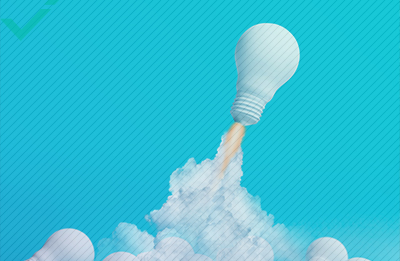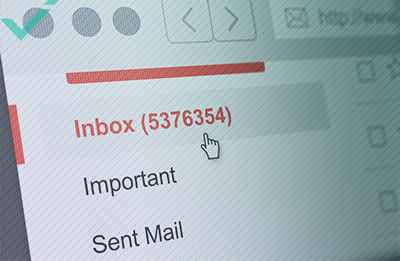Sales are the lifeblood of any successful business, but how do you keep new leads filtering through? Moreover, what’s the best way to keep those customers returning once you’ve secured a sale? The answer for virtually all businesses, whether selling a service or product, B2B or B2C, starts with a sales funnel. But what exactly is the sales funnel model, and why is it a crucial concept for sales teams to understand?
What Is a Sales Funnel?

The term sales funnel describes a customer’s journey, from the initial discovery of your brand or business to that all-important sale. And just like a real-life funnel, we start with a large pool of leads before the funnel slowly narrows as we nurture a select few towards a final sale or sign-up. Sales funnels typically include the following stages:
- Awareness
- Interest
- Desire
- Action
- Loyalty
The most effective sales funnels mirror the customer journey—from their initial discovery of your brand to nurturing their interest, helping them to decide on a product, and finally, inspiring them to take action and click “buy now”. Of course, there’s a lot more nuance to this process, and although the principles remain the same across virtually all businesses, your sales funnel should be a bespoke fit.
However, creating a tailored strategy becomes significantly more manageable once you understand the importance of a sales funnel and the five stages involved. With that in mind, let’s first break down the benefits of a sales funnel before explaining how to create your own.
![]() Unlock the power of sales with a strategic sales funnel—the essential model for guiding leads through the journey from discovery to loyalty.
Unlock the power of sales with a strategic sales funnel—the essential model for guiding leads through the journey from discovery to loyalty.
The Importance of a Sales Funnel
Whether your sales team consists of one or a hundred people, an effective sales funnel is crucial to securing new leads. More than that, though, it helps you understand how many new leads are needed to achieve desired conversion rates, and it provides a detailed look of your customer motivations, your email strategy, the overall journey from discovery to checkout, and much more.
Below, we’ll take a closer look at the specifics of a sales funnel and why it’s an essential sales tool.
Offers Insight
By mimicking your customer journey, an effective sales funnel shows you precisely where your business excels and where opportunities exist. For example, if the initial interest from targeted ads far exceeds expectations, but less than half of these impressions make it to the interest or desire stages, then there is a problem. The difference now is that you understand when/where this breakdown occurs and can target specific pain points in your customer journey.
Helps to Streamline the Customer Journey
Is your follow-up timely? Does the initial contact come across as too pushy? Maybe you’re simply sending too many emails when you should be giving your leads some breathing space. Rather than trying to get to the bottom of a poor conversion figure by working backwards via numerous metrics, a sales funnel focuses your energy, allowing you to streamline the customer journey.
Ultimately, the fewer hurdles the lead has to overcome, the better. However, take too much of a passive approach, and your customers may think you don’t value their business. Sales funnels are crucial in helping to make their journey as seamless as possible.
Helps to Prioritise Activities
Knowing new leads aren’t converting to sales or sign-ups is excellent—you’ve identified a problem. However, understanding the exact reason for a lost sale is impossible if you don’t know where in the customer journey they lost interest.
All too often, sales teams will panic and think that bombarding potential clients with emails and follow-ups is the answer. However, it could be a deeper problem, such as a lack of information on your website when leads are in the interest stage. The point is that a well-thought-out and bespoke sales funnel removes the guesswork, so you can focus exclusively on activities that give you the best return on investment (ROI).
Improves Optimisation
Optimisation is a huge part of a successful sales strategy. While it’s undoubtedly important to streamline the customer journey, don’t forget about the processes happening in-house. A successful sales funnel typically starts with a mailing list—a database worth its weight in digital gold if utilised correctly.
Not only does that mailing list provide you with potential leads, but you can use it to categorise clients by their shopping habits, level of interest, and much more. By following the principles of a sales funnel, it’s far easier to harness that contact information, monitor metrics and KPIs, and set smart, tangible targets.
Increases Customer Loyalty

Although a sales funnel ends when a lead completes a purchase, your hard work is not in vain. Why? Because treating your leads with care and attention throughout their entire journey has turned them into your most valuable commodity—a loyal customer. Considering it’s easier to manage existing customers than to constantly convince new ones, keeping them on board once they reach the end of the funnel is essential.
Easy to Understand
A sales funnel is one of the simplest sales models to implement, with five key stages and a general list of actions that should happen at each. Rather than broadly examining your lead generation and conversion rates, you’re focusing your efforts on specific metrics or pain points. Clearly identified problems lead to simpler solutions, and the sales funnel allows you to filter that problem-solving into actions that every member of your sales team can understand.
Increases Conversion Rates
The most important benefit of a sales funnel? Increased conversions! Look after your leads from the top to the bottom of the funnel, and you’ll close more sales—simple. Now, that doesn’t mean that your sales funnel never needs reviewing, but as long as you take a dynamic approach and track your metrics regularly, you will attract more leads than you thought possible.
![]() Easy to implement and understand, a sales funnel empowers your team to address specific pain points, leading to increased sales and long-term success.
Easy to implement and understand, a sales funnel empowers your team to address specific pain points, leading to increased sales and long-term success.
What Are the 5 Stages of Sales Funnels?
Having detailed the benefits of an effective sales funnel, it’s time to explain the most critical stages. While your focus during specific stages will differ according to your customer profile and business objectives, you must understand how new leads move through each stage.
1. Awareness
If you’ve ever browsed social media, noticed an attractive ad, and clicked to learn more, you’ve entered the awareness stage of that company’s sales funnel. However, during this time, it’s still far too early for leads to commit to a sale.
Instead, they’re reading product descriptions, learning more about your business (and competitors), and generally getting a feel for your brand. Of course, to build awareness, you need to retain your client’s attention. Targeted ads on social media are one approach, but don’t discount the effectiveness of inbound marketing emails, blogs, and customer testimonials.
2. Interest
Interest is usually the most challenging stage to foster, as the lead has settled on a problem or product but isn’t ready to make a purchase. They’ll be reviewing specific details and may even reach out to ask you questions. It’s also during the interest stage that sales teams can start lead-scoring to identify the viability of a future sale. You’ll want to demonstrate your value as a brand or business, but a less-is-more approach is crucial to prevent scaring off your new leads.
3. Desire
Congratulations, your lead has the desire to buy, but your work isn’t over just yet. Despite being satisfied with the initial impressions and the deep dive they did into your products or services, most still need a slight nudge. This could be something as simple as a 10% discount for first-time buyers, but it could also be more personal, with bespoke advice or feedback from a member of your sales team. Other possible incentives include:
- Free delivery
- Bonus products
- Loyalty points
4. Action
Although it may seem like the sales team has completed their task, leaving a lead unattended during the final stages of a purchase could cost the team the close. For example, if your client had questions during their journey, assure them you’re taking their feedback on board and reiterate how your product/service is going to solve any issues they’ve shared.
Don’t forget, it’s still possible for a lead to back out, and while this is far from ideal, don’t end contact immediately. Staying in contact with a failed close is essential because you never know when the lead’s situation will change.
5. Loyalty
Sale complete! Still, remember what we said about it being just as important to retain loyal customers as it is to develop new leads? Follow up with them to discover how they’re getting on with their new product or service. You can even remind them of loyalty points earned, exclusive promotions for members, and other information tailored to their shopping preferences.
![]() Craft a tailored approach at each of the five stages of the sales funnel, and watch as your business turns leads into lasting relationships.
Craft a tailored approach at each of the five stages of the sales funnel, and watch as your business turns leads into lasting relationships.
How Do I Create a Sales Funnel?
Now for the most important aspect of your sales funnel strategy—actually implementing one. As highlighted, virtually all sales funnels follow the same core principles, and the steps outlined below will provide a framework you can adapt as your sales team becomes more effective.
Step 1: Make a Plan
To make your sales funnel as effective as possible, you need to have a clear goal and understand, in detail, the habits and behaviours of your target customer. Will you target email sign-ups, greater conversion rates, lead generation, or another metric valuable to your business? Finally, can you utilise software to centralise all of the information you’re gathering? Now’s the time to figure out your strategy.
Step 2: Define Your Audience and Goals

With the plan set, you can build your sales focus around that singular goal. Now, that doesn’t mean you can’t adapt and add milestones at each stage of the sales funnel, but for now, we want to focus on streamlining the model in its entirety.
It’s also time to take a detailed look at your clients. How do they shop, when do they shop, and what is a problem they need solving? Only by understanding exactly who your customers are can you hope to make their journey as captivating as possible.
Step 3: Build a Good Landing Page
Speaking of captivating your audience, step three of your bespoke sales funnel involves building awareness and fostering interest. The two typically go hand in hand, so bring your marketing, design, and sales teams together to create a fully optimised ad campaign and landing page to gather contact information.
Step 4: Create Offers
To bring leads to your page, you’ll need to establish an offer that they find appealing. Free trials (or a small discount for newsletter sign-ups) encourage leads to click through from an ad to your landing page. And, even better, you’ll get an extra contact for your mailing list.
Step 5: Qualify Leads
Most leads will be ready to enter the nurturing phase. However, not all leads will want to buy your product or service. This is precisely why the model is based on a funnel. At the top end, you want to capture as many new clients as possible. Then, through lead scoring, you can evaluate which contacts need more information, which are still researching, and which aren’t the right fit for your business.
Step 6: Nurture
Having established the qualifying leads you’d like to progress through the funnel, it’s time to start ramping up their interest. Again, the key here is to take a balanced approach and remember that every lead may need a slightly different level of contact. Here’s where your initial customer profile research comes into its own. Common strategies for nurturing include:
- Drip email campaigns
- Reinforcement of your message on social media
- Simply reaching out to answer any questions
Whichever approach works well for your clients, you must give them the attention they deserve, often including an extra (albeit small) incentive to nudge them towards a close (such as a promo or discount).
Step 7: Close the Deal
The close is in sight, but don’t assume the deal is done. Even a lead on the verge of becoming a customer may decide to back out. As such, you’ll want to keep all communication lines open regardless of the outcome. However, even if a lead backs out at the last minute, it doesn’t mean all your hard work was wasted.
For some leads, it simply isn’t the right time to commit, but all the work you’ve done nurturing them through your customer journey will pay dividends. It’s crucial you stay in contact so that if and when their circumstances change, it’s easy for them to pick up where they left off.

Step 8: Keep It Going
Your new lead has been guided smoothly down your funnel and is now a full-fledged customer. Mission accomplished, right? While they may not follow the same pattern, returning customers need just as much care and attention as when they first showed interest in your business or brand.
Step 9: Evaluate and Optimise
Remember those metrics you chose to track in step one? It’s now time to review and evaluate your process. How did your team perform? Were there any sticking points in the customer journey? Did any leads fail to close despite surpassing the interest and desire stages?
Even if you can confidently answer all of those questions, your sales funnel should be a continually evolving tool. By taking a detailed look at each stage, you can address more minor issues and fine-tune your customer journey for optimal efficiency.
![]() Sales funnels may appear complicated on the surface, but crafting a bespoke solution is straightforward, provided you set clear objectives.
Sales funnels may appear complicated on the surface, but crafting a bespoke solution is straightforward, provided you set clear objectives.
Sales Funnel: Increasing Conversions or Delighting Customers?
The sales funnel is a core business concept that not only helps to convert new leads into customers, but keeps your returning customers coming back for more. Simple, effective, and suitable for virtually all businesses, it is a strategy that pays dividends if managed correctly. The key, of course, is taking the principles outlined in this article and tailoring them to your needs.
Still, customer shopping habits are continually evolving. As such, they spend more time researching (the interest stage of the sales funnel) products and services than ever before. You may find that a simple nudge from your sales team isn’t enough.
This is when your sales flywheel springs into action. A more modern approach to marketing and sales, it takes the core values of a sales funnel and harnesses the momentum of all your teams, new leads, existing customers, and even promoters to create a self-fulfilling sales cycle. For now, though, embrace the benefits of your newly developed sales funnel, and watch conversion rates increase like never before.


